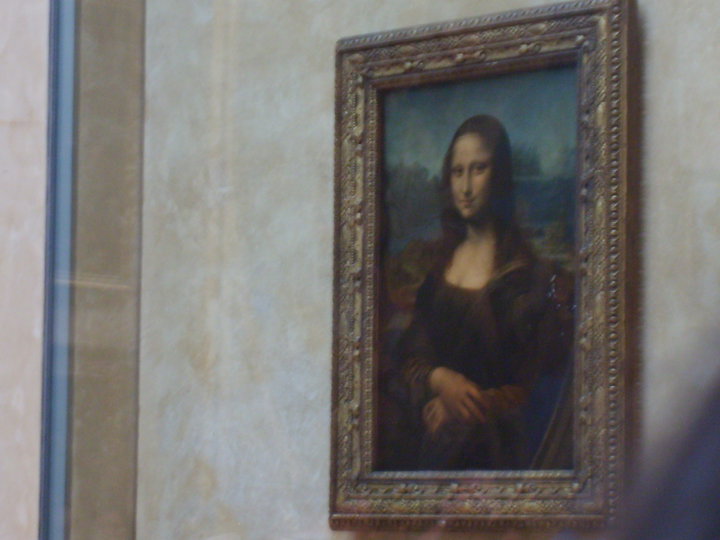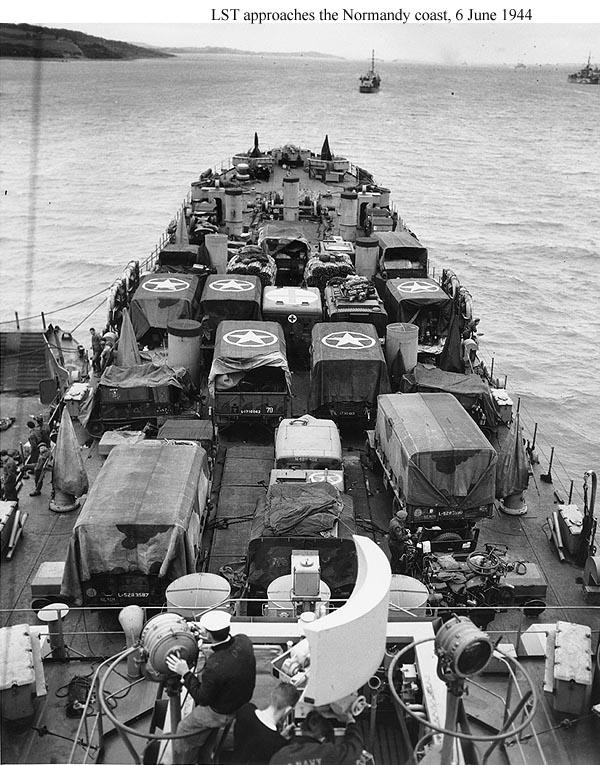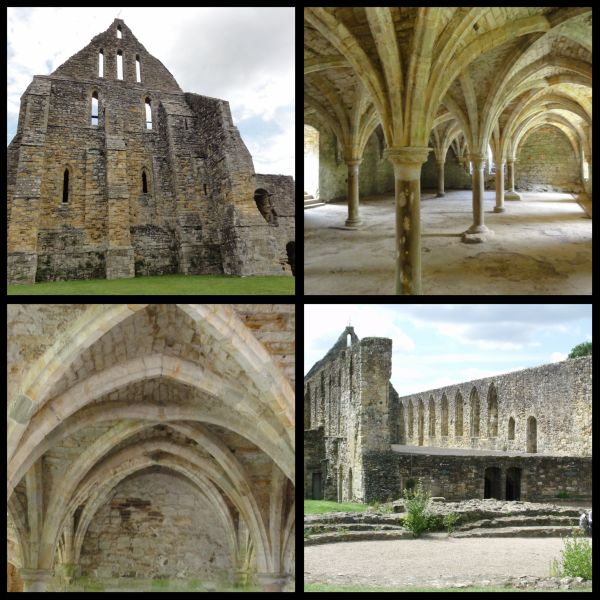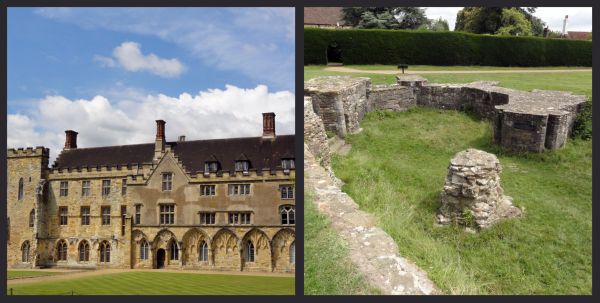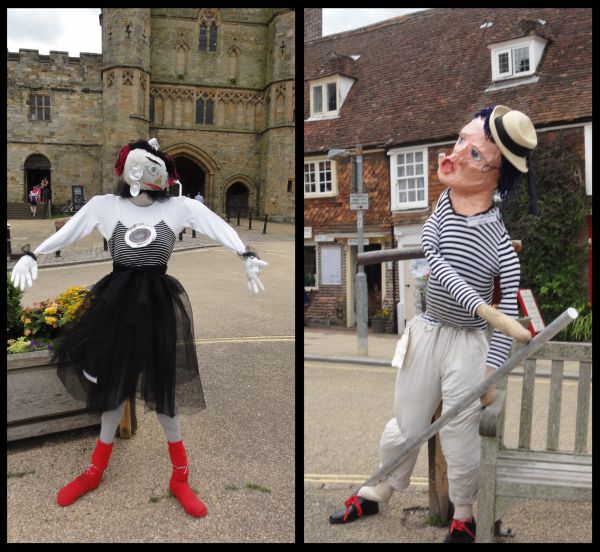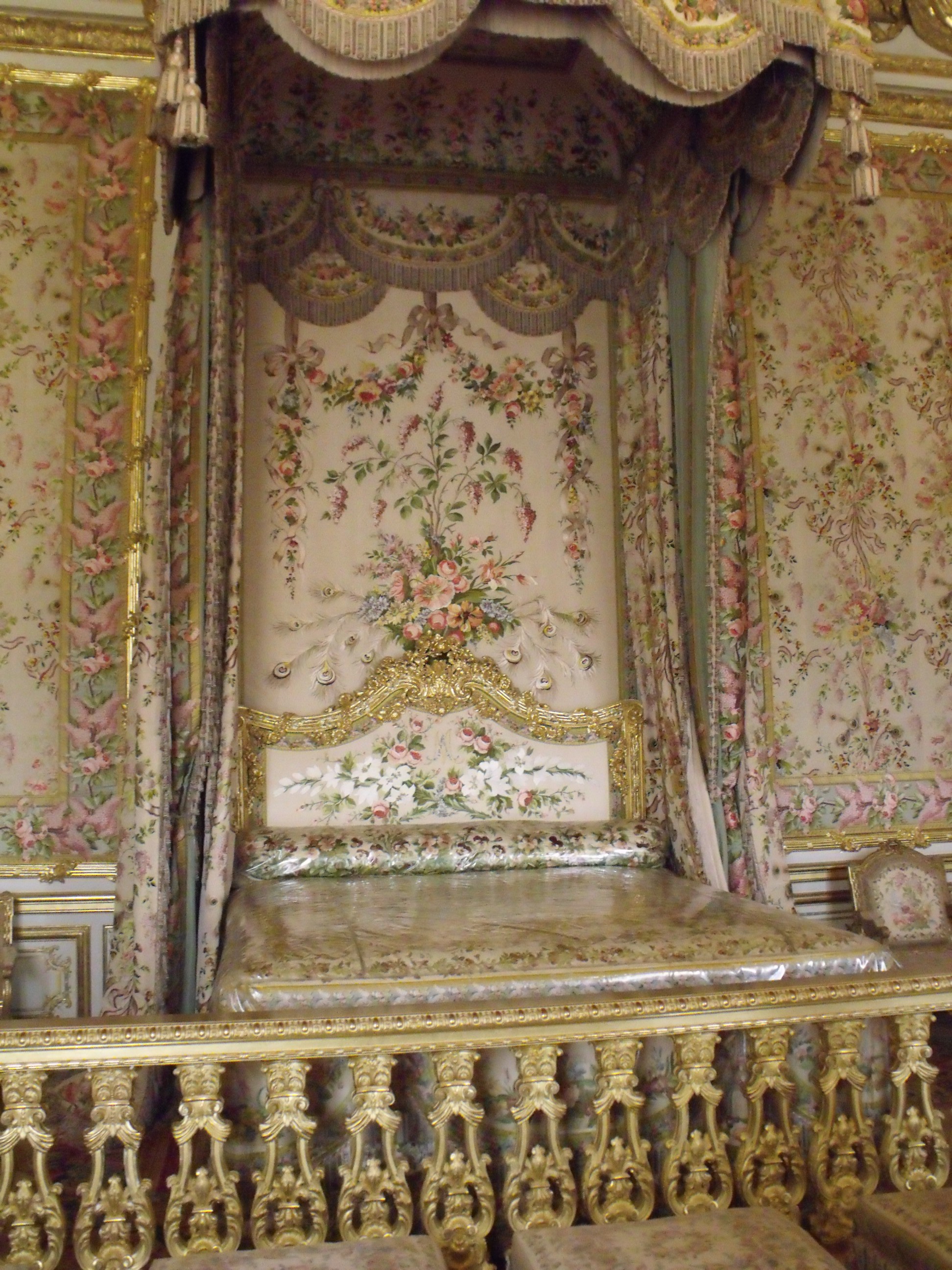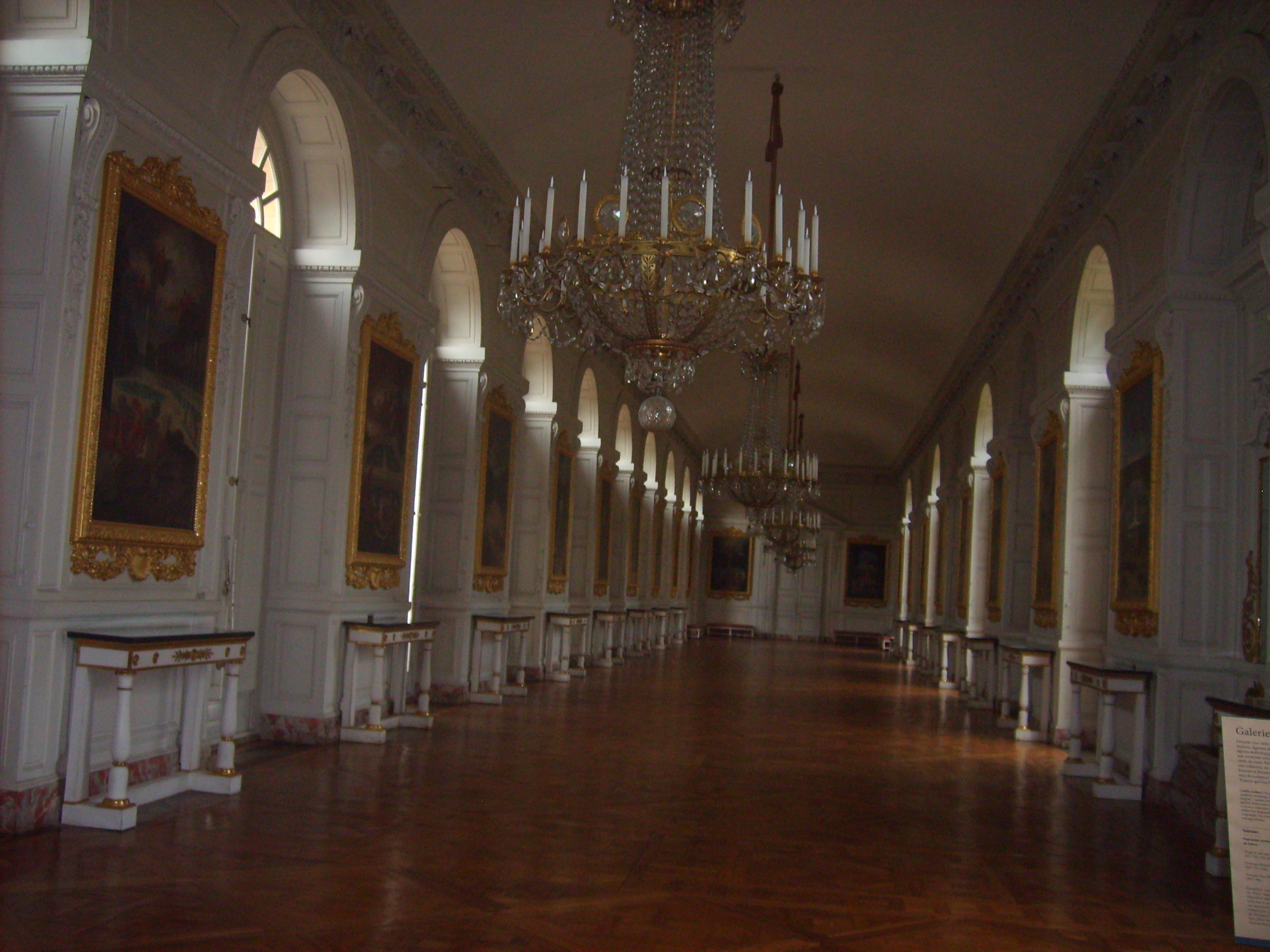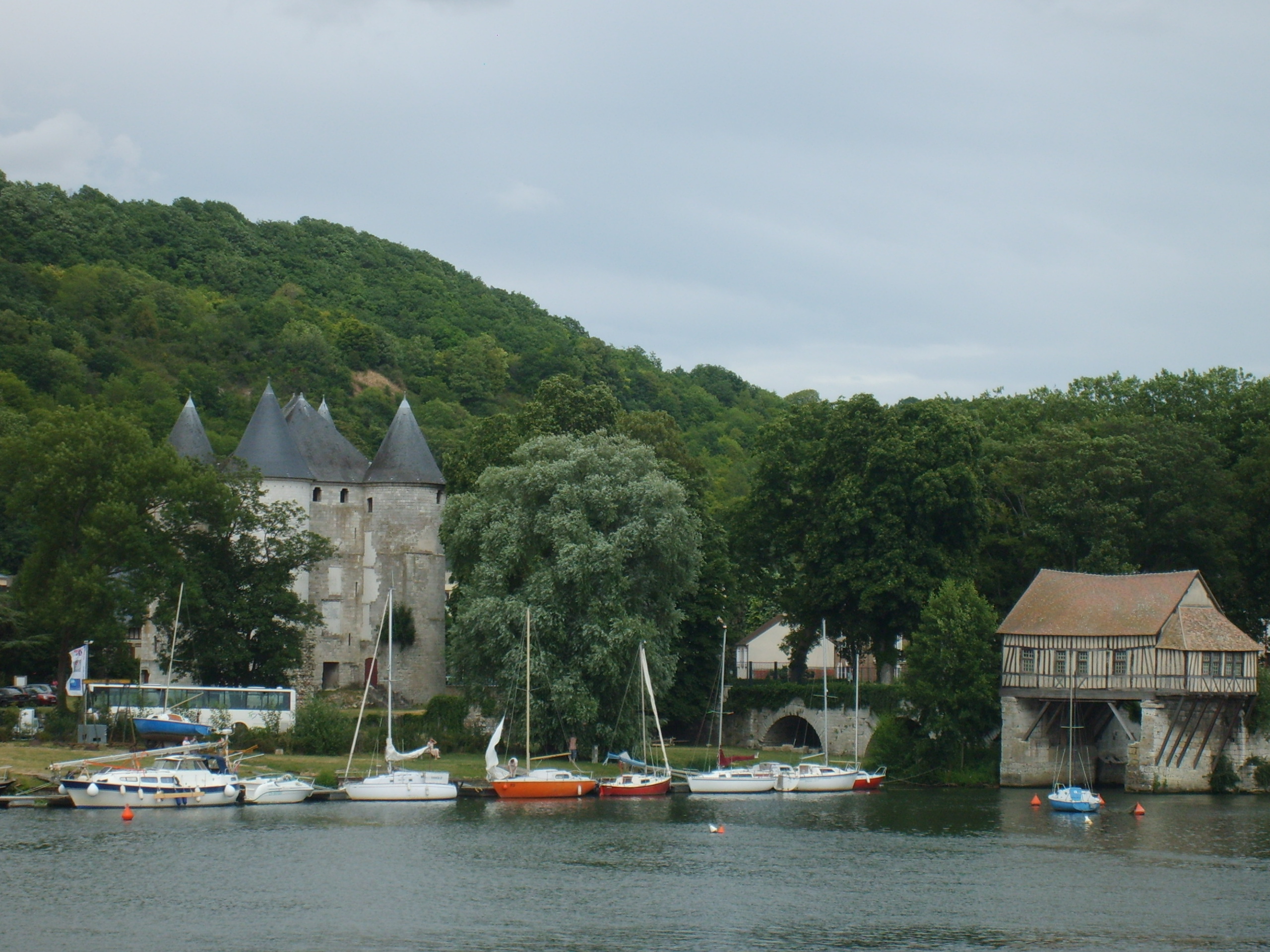Category Archives: France
31 Days in Europe: Battle
I’m pretty much a pacifist. I am married to a pacifist. Although I don’t judge those who choose the military as a career or as a way to gain an education, I wish we didn’t have to make that choice at all. I wish that our global community could learn to get along by using our words.
That being said, visits to two very important battlefields in France and England have been meaningful and spiritual. This photo is the closest I can get to my father’s experience when he landed at Omaha Beach in Normandy in 1944. As a part of our river cruise on the Seine last year, we spent a day roaming around the Normandy beaches.
The day that we were docked near Normandy, we had a choice of visiting the Normandy battlefields or going to Mont St. Michel or going to see the Bayeux Tapestry. The Bayeux Tapestry depicts the events of the Battle of Hastings, and was most likely created in about 1070. Since my dad landed at Normandy, it was really important for me to see that, but I didn’t really understand that seeing the Tapestry would set me up for understanding this year’s visit to the site of the Battle of Hastings.
When I look at these pastoral scenes, it’s hard to visualize the enormity of an army composed of mostly foot soldiers under the command of King Harold II being ambushed by a far superior Norman-French army of archers, cavalry, and infantry working cooperatively together and led by Duke William II of Normandy. The Battle of Hastings occurred on October 14, 1066, during the Norman conquest of England, and marked the last successful foreign invasion of the British Isles. Harold II was killed in the battle—legend has it that he was shot through the eye with an arrow. Harold II became the last English king to die in battle on English soil until Richard III was killed at the Battle of Bosworth Field. Although there was further English resistance, this battle is seen as the point at which William gained control of England, becoming its first Norman ruler as King William I and is known as William the Conqueror. (Don’t judge me, but I got a lot of this from Wikipedia and I have to give credit.)
These two battlefields remind me of how I feel when I visit the Gettysburg Battlefield — horrified and sickened at the loss of life. Apparently, so was Pope Alexander II, because he ordered the Normans to do penance for killing so many people during their conquest of England. William the Conqueror vowed to build an abbey where the Battle of Hastings had taken place, with the high altar of its church on the supposed spot where King Harold fell in that battle. He did start building it but died before its completion; it was finished in about 1094 and consecrated during the reign of his son William Rufus. William the Conqueror had ruled that the Church of St. Martin of Battle was to be exempted from all episcopal jurisdiction, putting it on the level of Canterbury. It was remodelled in the late 13th century but virtually destroyed during the Dissolution of the Monasteries under King Henry VIII. That’s the Battle Abbey we visited — another reminder of how powerful and ruthless Henry VIII was — and we were able to walk freely through the ruins.
These buildings were used as dormitories and workrooms; the actual church only exists where there has been excavation of the crypt, and a plaque marks the site of the high altar that was placed where King Harold was killed. Some of the Abbey buildings are used as a school.
As with most of the other places we have visited in Europe, really ancient and important relics and buildings are often side by side with evidence of normal people living normal lives. The same applies to Battle; the town square right outside of the gatehouse to the Abbey was decorated with garish figures advertising an upcoming theater presentation. That’s probably why I love history so much — it’s just a bunch of stories about people living their lives — and at Battle, the living coexist with the dead in perfect harmony.
31 Days in Europe: A Revisit to France
In the summer of 2010 we went to France. Before we went, I blogged about all the books I read to prepare me for being in France. Check back in my archives — I was scared of being treated like an ugly American. I was wrong and I loved every minute of our trip. I think it’s worth a revisit to last year’s post for this series!
 This post linked up with hundreds of other 31 Day-ers. Join the fun and visit other bloggers as they share a piece of themselves. Today I’m number 568, by the way.
This post linked up with hundreds of other 31 Day-ers. Join the fun and visit other bloggers as they share a piece of themselves. Today I’m number 568, by the way.
Spring!
Thank goodness! At least for a fleeting moment, we might actually be having spring in Chicago.

Image via womenthatwow.com
Spring means sandals and pedicures; what a lovely thought after seven months of sensible shoes.

Image via flickr.com
I wore a more sturdy sandal to school, but tonight’s 80 degree weather inspired me to pull out my spangled flip-flops. When I went to put them on, they still had dust bunnies clinging to them. I tenderly disentangled the dust from the sequins, examining the worn soles. Worn out flip-flop soles don’t seem very romantic, but these soles were worn out by trodding the streets of Paris.

Image via members.virtualtourist.com
I blogged about my trusty flip-flops here.
Next stop, London! Well, after Downers’ Grove tonight (and a few other places in between). And I need a pedicure.
Book Review: A Good Year
Tonight’s guilty pleasure is going to be to write about a wonderful book and and its not quite wonderful movie. I should be grading papers…
I have a love/hate relationship with Peter Mayle. I’ve read practically everything he has written and I regularly check out the delightful A Year in Provence video from the library, but sometimes I get tired of his similar plot lines. They are really “all about him” — or perhaps what he wishes he were.
After last year’s immersion in books about France, I’m pretty sure I don’t have what it takes to chuck it all and live in the French countryside, but I still love reading about those who do, and Mayle is a master at telling us about what it’s like to be a foreigner in the strange land that is France. That’s why I keep reading; maybe someday I’ll actually be brave enough (and fluent enough in French) to take the plunge into the Luberon.

Image via fantasticfiction.co.uk
I remembered with a certain fondness the movie A Good Year, starring Russell Crowe. I hadn’t watched it for a while and I started thinking about the whole Netflix thing; maybe I could instantly get it without actually having to go to the library…
That didn’t work out and I still don’t have Netflix hooked up, but I did decide to read the book first. Somehow, I had never read it during my Peter Mayle fixation. The protagonist, Max Skinner, inherits his uncle’s estate in Provence where he spent his childhood summers. While trying to decide whether or not to sell the property and return to his life as a stockbroker in London, he falls in love again with the lifestyle of southern France. Along the way, he learns that his vineyard has been hijacked by nefarious wine merchants. It was a grand little mystery with stereotyped English, French, and American characters and lots of wine thrown in. What’s not to like?
Then I watched the movie. Although it’s a delightful little piece of Provencal love-story fluff directed by Ridley Scott, the full-bodied mystery was lost and the host of quirky characters were diluted to a pale white zinfandel. Russell Crowe is lovely to look at, and young Freddie Highmore is adorable as the young Max Skinner. If you’re not a reader, by all means watch the movie; you’ll enjoy it, but the book is better.
Isn’t the book always better?
I Love David Lebovitz (as a cyberfan, of course)
I started linking up some favorite posts from David Lebovitz on my Facebook page, but then realized he needed to be shared with a broader audience. I love everything about David’s blog, Living the Sweet Life in Paris — his erudite yet informal style and most of all, his luscious photographs. Here’s a recap of some recent posts to whet your appetite (pun intended)!
To start with, let’s talk about Food Blogger Camp. Can you imagine going to Mexico with some famous food bloggers and photographers to learn how to write about and take photos of food? I’m ready to sign up right now!
And then there’s David’s Paris and Lausanne Chocolate and Gastronomy Tour in May. It’s a good thing it’s sold out, because it’s mighty tempting to take some personal days to participate in this incredible adventure. Hopefully someday I’ll be able to share this experience with my French-at-heart sister-in-law and other friends.

Since I recently went to Paris and experienced the lack-o-sandwich and street food, I thought David’s recent post on the growth of Subway sandwich shops and other take-out sandwich places was very interesting. We got take-out croissant sandwiches from a little shop in the Jardin des Tuileries and enjoyed people watching.

Of course, if you love chocolate and can’t get to Paris, there’s always Hershey, Pennsylvania. You can sample the gastronomic delights of numerous restaurants and cap off your meal with something sinfully chocolicious. Maybe I’ll see you there.

Bookin’ and Cookin’: A Moveable Feast
In this Friday series, I combine two of my favorite things, reading and cooking. That probably means there will also be discussion of more than a few books made into movies. I hope that you will be moved to offer suggestions for other reads that will be “palateable”!

If you’ve been reading my blog for a while, you are likely to remember that I spent most of last year enjoying books about France and books and movies set in France to improve my cultural knowledge before my summer 2010 trip to Paris and Normandy. Although I purchased Ernest Hemingway’s A Moveable Feast before the trip, somehow I didn’t quite get around to reading it until after we came home. As it turns out, I’m glad that it worked out that way, because A Moveable Feast
is truly a feast for the reader as Hemingway presents the banquet of experiences that was Paris in the 1920s.
Paris is not the same today as it was during Hemingway’s years there, but I was certainly charmed by both the magic of Paris and the magic of Hemingway’s sharp, clear text structure. I could imagine myself at Shakespeare and Company

and at Les Deux Magots enjoying wine or coffee along with fabulous people-watching.

Surrounded by a cloud of literary and artistic angels, Hemingway’s book of essays is a must read. If you read them as a inexperienced high school student, read A Moveable Feast again.
Following our stay in Paris, we moved on to a river cruise along the Seine from Paris to Normandy. It was enchanting and relaxing after the bustle of Paris and our tour of the D-Day beaches was a moving highlight of the cruise, but an equally important part of the trip was the extraordinary food. I am still marveling at the ease of traveling on a riverboat with only 150 passengers — the most difficult part of the restaurant experience was making sure there was a table that would fit our group of six. With only one seating, the tables filled up quickly. I have only positive things to say about traveling on the Viking Spirit. Just in case you’re worried about traveling in France as I was, don’t worry. We found most of the people we met delightful and it was a wonderful trip — I blogged about my reactions here when we returned.
So, I will leave you with a Viking recipe for gougères, a French cheese biscuit that is often served as an appetizer. It’s super easy to make and very tasty. Thanks to Viking Cruise Lines for this recipe, which I borrowed verbatim from their Facebook page.

Gougères are among the most popular hors d’oeuvres in France. A traditional specialty of the Burgundy region, gruyères are often made with gruyère cheese, but sometimes other cheeses (such as parmesan) are used to add an extra depth. Enjoy gougères with a glass (or two) of good French wine. Experience a little piece of France at home with this delicious recipe.
Ingredients:
One and one-half cups water
One-half cup butter, cut into cubes
One and one-half cups flour (unbleached, all-purpose)
Six large eggs
One cup (packed) grated gruyère cheese
One-half cup (packed) good-quality parmesan
One-half teaspoon fresh ground pepper
One-half teaspoon salt
| Directions: Place one rack in top third and a second in the bottom third of oven; preheat to 400°F. Line two rimmed baking sheets with parchment paper, lightly greased with non-stick cooking spray.In a 3- to 4-quart pan over medium heat, bring the water, butter and salt to a simmer, stirring until the butter melts. Add flour all at once, and stir rapidly with a wooden spoon until mixture is a smooth, thick paste with no lumps. Remove pan from heat and allow mixture to cool. Using a hand-held mixer, beat in one egg at a time until all are incorporated. Stir in cheese and pepper. Using a tablespoon, drop 48 equal mounds of dough onto parchment-lined baking sheets, spacing each mound three inches apart. Bake until dough is puffed, and looks dry and golden brown, about 30 minutes. Halfway though cooking, reverse the positions of the baking pans. Makes 10-12 servings. |
Linky Love: A New Favorite
For those of you who are enjoying the all-France all-the-time theme, here’s a new blog for you. I’ve barely scratched the surface on this one, but can’t wait to follow her on a regular basis!
What Would Marie Antoinette Do?
Things I Love: An Ode to Flip-Flops
In my inner movie, my memories of France will be forever punctuated by a very special sound. The roar of motorbikes as they sped between lanes of traffic? The tinkle of glasses and silverware floating out of upper-floor open windows in the sultry July summer? The sound of street and subway musicians pouring their souls out on their instruments? Yes, to all of those. But the sound I will most remember is the flap, flap, flap of my trusty flip-flops as I trudged up and down the Metro staircases and sauntered along hallways in museums. You could almost call it a comfort sound, like the lullaby your mother sings or the feeling you get when hearing a favorite hymn.
And comfortable it was. At the last minute before we left on the trip, I decided to purchase a pair of bejeweled thick-soled flip-flops to use as an antidote to the sturdy shoes I planned to wear during days of sightseeing. As it turned out, that last-minute decision was a life saver.

I wore the flip-flops at Versailles after we got drenched in the rain outside the Petit Trianon.
I wore the flip-flops in the evenings on the cruise ship after my feet and ankles swelled from all the salt in those delectable sauces.
I even wore them the last day in Paris, when that tender place between my toes was broken in and the soft foam sole was all that I could handle after twelve days of sightseeing.
I didn’t take any photos of people’s feet in Paris, but if I had, you would see thousands of flip-flops. All sizes, shapes, and styles, and they weren’t all on tacky American feet. The French wear flip-flops, too, but they are likely to be trendy Havaianas.

NRB gave me “that look” when I suggested we bring home Paris flip-flops as souvenirs, but really, isn’t a good flip-flop the ultimate in thoughtful gift-giving?
Top Ten Tuesday: Things I Learned about France
Having just gotten home from a two-week trip to France, I’m full of ideas about which to write. Taking advantage of the alliteration provided by TTT, I’ll quickly give you some first reflections.
Paris is a city where its history stands right next to its future. It is as romantic or as razor-sharp as you need it to be. Paris is a classic city and I loved it.
The Normandy villages and countryside provide a delicate contrast to Paris. They are laid-back and drowsy in the summer sun. The English style half-timbered houses alongside traditional French stone chateaus and ancient fortresses tell a story of a region that changed hands many times. It is also a modern district of busy harbors, orchards laden with fruit, and memories of how other countries came to France’s aid in 1944 to rescue her from an occupying monstrous invader. A leisurely river cruise along the Seine was the perfect antidote to the passion of Paris.
- You don’t have to wear all black in Paris. Yes, it doesn’t hurt to have a classic black dress that you can dress up or down with scarves and jewelry, but in July, people are wearing everything. There are tourists everywhere and the streets are full of people in every style of clothing from every country.
- People really do wear scarves all the time in Paris and the countryside. Bring one from home to get you started and then go immediately to the street vendors by Notre Dame Cathedral on the Ile de la Cité and buy three new ones for ten Euros. Parisian style is easy and cheap to come by.
- It’s worth it to climb up to the top of at least one monument. The views of Paris from the top of the Pantheon, the Arc de Triomphe, the Eiffel Tower, and the Basilique Sacré-Coeur (the mother of all views) are not to be missed.
- Public transportation is cheap and easy to use. The Metro and RER are well marked and there are always people around who know how to use the machines to help you. Just don’t expect elevators and escalators. There are lots of steps between levels.
- The taxi drivers really do go out on strike. On July 19, 2010, we took a 6:15 AM taxi to Charles de Gaulle for a 12:15 flight in order to avoid a strike, and it’s a good thing our concierge told us about it on Sunday night. We decided it was better to be safe than sorry, so we took a very early cab. Our taxi driver told us that the taxis were going to block all the entrances to CDG at 7:00 AM and they did.
- Hotel rooms in Paris are small; get over it. Since you really can’t get much takeout food to eat in your room and the English speaking television is limited, there isn’t any good reason other than sleeping and “resting” to be in your room. You’re in Paris, for goodness sake! We were very lucky to book room 701 at the Best Western Hotel Folkestone Opera which is a little larger and has a full size tub. It was still small by American standards but met our needs very nicely and was reasonable.
- People in France are generally pleasant to tourists and many speak enough English to help you. Since I live in a big city (Chicago) and have traveled to New York and other big cities, I didn’t find Paris particularly different in its demeanor. Our hotel concierge Virginie and the rest of the staff all spoke enough English to help us and so did most of the waiters in the restaurants. Between my husband’s high school French and my Spanish (with a few gestures thrown in), we didn’t have much trouble being understood and understanding. It was good for our brains!
- If you want to be taken seriously in a serious restaurant, wear something appropriate, speak softly, and don’t order French fries and a hamburger. The food is fabulous; enjoy the experience.
- French women are thinner and have smaller bone structure than Americans; it’s a fact of life and genetics. Unless you are pretty thin and have small shoulders, you probably aren’t going to fit into much in the stores. Even the plus sizes have a smaller upper body structure. Buy something else to bring home as a souvenir of your trip.
- There are ugly Americans everywhere, but you don’t have to be one. Our cruising family included a woman who ordered others around, talked loudly to the ship staff and shopkeepers to get her point across, and was generally annoying. Look around you; figure out what the locals are doing and follow their lead. You won’t be disappointed because you won’t have any need to complain.
I have lots more to tell you and lots of photos to share. Until then, bonne journée!


